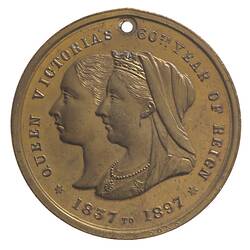Lithgow lies in a valley on the western edge of the Blue Mountains. It was named in 1827 by Hamilton Hume, in honour of Governor Brisbane's private secretary, William Lithgow. The area's European settlers had begun to arrive three years earlier. By 1860 however, only four families had followed Scotsman Andrew Brown and settled in the valley. It was not until the western railway line was constructed to Lithgow in 1869 that the town prospered.
The valley's first commercial coal mine was established by Thomas Brown. The Zig Zag Railway, an engineering feat, was completed in 1869, allowing the descent of trains into the valley. A combination of vast coal reserves and the rail service meant Lithgow was a suitable location for industries dependent on coal and rail. In 1875 James Rutherford established an iron industry in the area when he erected a blast furnace to manufacture pig iron. By 1900 Lithgow had produced the first steel manufactured in Australia; by 1901 it had seven collieries. Breweries, copper smelting, pipe and pottery works and brickworks followed. Meat refrigeration was also established by Thomas Mort in 1875; the first Australian chilled meat from Lithgow arrived in England in 1880. Lithgow became a strongly unionized town.
Lithgow was declared a municipality in 1889.
Lithgow's industrial decline made way for light industry after World War II. In the late 1950s a power-generating plant was built at Wallerawang, paving the way for Lithgow's role in the clean energy production.
References:
Lithgow Tourism Information website http://www.lisp.com.au/~lithtour/history.htm, accessed 21/01/2004.
Lithgow Community Technical College website http://lithgow.ctc.nsw.gov.au/about_ctc/, accessed 21/01/2004.
More Information
-
Keywords
-
Localities
-
Authors
-
Article types

